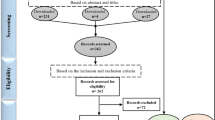Abstract
This paper extends the results of the research presented recently in Vienna and incorporates an algorithm to obtain very precise control of the addition of the coagulation chemical by developing a neuro self-tuning policy for automatically adjusting the parameters of a conventional PI controller.
Zusammenfassung
Dieser Beitrag verweist auf die unlängst in Wien vorgelegten Forschungsergebnisse und enthält einen Algorithmus zur sehr genauen Steuerung von chemikalischen Zusätzen durch die Entwicklung eines neuralen selbstabgleichenden Verfahrens für das automatische Einstellen der Parameter eines konventionellen PI-Kontrollers.
Similar content being viewed by others
References
Behera, L., et al.: Inversion of RBF networks and applications to adaptive control of nonlinear systems. IEE Proceedings in Control Theory and Application 142 (1995), No. 6, pp. 617–624.
Böhme, T. J., et al.: Performance assessment of a neuro self-tuning PI controller to be used at a water treatment plant. Submitted and accepted for American Control Conference ’99 (1999).
Böhme, T. J., et al.: Sensor failure and signal reconstruction using auto-associative neural networks. Proc. ICSC/IFAC Symposium on Neural Computation (1998), pp. 220–225.
Böhme, T. J.: Stability issues for neural self-tuning control. Internal Report, University of Sunderland, School of Computing, Engineering and Technology, Control Systems Centre. 1999.
Chow, E. Y., Willsky, A. S.: Analytical redundancy and the design of robust failure detection system. IEEE Trans. on Automatic Control AC-29 (1984), No. 7, pp. 603–614.
Chu, S. R., et al.: Neural networks for system identification. IEEE Control System Magazine (1990), pp. 31–35.
Cooper, D. J., et al.: Comparing two neural networks for pattern based adaptive process control. AIChE Journal 38 (1992), No. 1, pp. 41–55.
Dong, D., McAvoy, T. J.: Multi-stage batch process monitoring. Proc. American Control Conference (1995), pp. 1857–1861.
Dunia, R., et al.: Use of principal component analysis for sensor fault identification. Computers and Chemical Engineering 20 (1996), pp. 713–718.
Freeman, J. A., Skapura, D. M.: Neural networks: algorithm, applications and programming techniques. Reading: Addison-Wesley, 1991.
Gue, T.-H., Nurre, J.: Sensor failure detection and recovery by neural networks. IEEE (1991), pp. 221–226.
Gue, T.-H., Musgrave, J.: Neural network based sensor validation for reusable rocket engines. Proc. of the American Control Conference (1995), pp. 1367–1372.
Guez, A., et al.: Neural network architecture for control. IEEE Control System Magazine (1988), pp. 22–25.
Hastie, T., Stuetzle, W.: Principal curves. Journal of the American Statistical Association 84 (1989), No. 406, pp. 502–516.
Hertz, J., et al.: Introduction to the theory of neural computation, pp. 198. Redwood City, CA: Addison-Wesley, 1991.
Kramer, M. A.: Nonlinear principal component analysis using autoassociative neural networks. AIChE Journal 37 (1991), No. 2, pp. 233–243.
Kurtanjek, Z.: Singular value and principal component decomposition for process data modelling. Automatika 36 (1995), No. 3, pp. 109–112.
Lee, J. W., Oh, J. H.: Inversion control of nonlinear systems with neural network modelling. IEE Proceedings in control Theory and Application 144 (1997), No. 5, pp. 481–486.
Lightbody, G., Irwin, G. W.: Direct neural model reference adaptive control. IEE Proc.-Control Theory Appl. 142 (1995), No. 1, pp. 31–43.
Lu, Y. Z.: Industrial intelligent control. New York: John Wiley. 1996.
Mac Gregor, J. F.: Statistical process control of multivariate processes. IFAC/ADCHEM — Advanced Control of Chemical Processes (1994).
Nguyen, D., Widrow, B.: The track backer-upper: An example of self-learning in neural networks. Proc. of the international joint conference on Neural Networks 2 (1989), pp. 11357–11363.
Omatu, S., Yoshioka, M.: Neuro-approach for intelligent systems development. IEEE International Conference on Neural Networks — Conference Proceedings 4 (1997), pp. 2418–2423.
Reddy, V. N., Mavrovouniotis, M. L.: Plant monitoring and diagnosis using input-training neural networks. Proc. of the American Power Conference 1 (1996), pp. 309–314.
Tan, S., Mavrovouniotis, M. L.: Reducing data dimensionality through optimizing neural network inputs. AIChE Journal 41 (1995), No. 6, pp. 1471–1481.
Tanomaru, J., et al.: Process control by on-line trained neural controllers. IEEE Transaction on Industrial Electronics 39 (1992), No. 6.
Author information
Authors and Affiliations
Rights and permissions
About this article
Cite this article
Böhme, T.J., Fletcher, I. & Cox, C.S. Reliable neuro self-tuning control using autoassociative neural networks for the water treatment. Elektrotech. Inftech. 116, 375–389 (1999). https://doi.org/10.1007/BF03159199
Issue Date:
DOI: https://doi.org/10.1007/BF03159199




